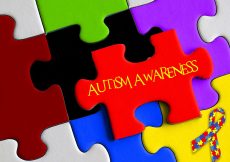
Autistic children have their own ways to express feelings. The earlier the identification of problematic behaviors occurs, the easier their adaptation to the world around is efficient.
Today, let’s see how an autistic child expresses himself (sometimes in a quiet “confusing way” to us who have learned how to express our requests and emotions with right tools as gestures or words). Let’s also have a quick look at some tools that may help autistic children to express their needs and feelings easier.
How To Get Understood?
Autistic children find it difficult to make themselves understood by people surrounding them. They are often unable to communicate their feelings and needs efficiently. Why ? Because they don’t have the right tools at hand to do it. It’s up to us, adults trained in autism, to figure out when a tool is missing. We must also bring them that special tool.
A child with a mild autism may scream or tap to get a particular object or to get some help. It is up to you to be vigilant because if you respond his request that way then he may go on borrowing that means of expression to get your attention. He uses again what works! That is quiet logical! For example, if the autistic child screams when he needs a calm time and you effectively isolate him from others after his cries, he may understand that it is necessary to scream to get a quiet moment away.
Pictograms Are Great Tools!
The good behavior may consist in providing the child with pictograms, and especially one of which has a design evoking calm (for example the symbol of a child who breathes alone). When the behavior to make oneself understood is inappropriate, it is very necessary to put a communication object between the two protagonists.
One day a little boy with a mild autism came to see me to try sophrology. But as soon as he arrived, despite the welcoming atmosphere of my office, he hid under my desk for 10 minuts! I was able to get him out by asking him to try the radio set in front of him. Fortunately, this child was not hypersensitive to sound! This was, of course, only a method for me to break the ice. The good technique would have been to show him, as soon as he arrived, pictograms explaining what we were going to do during the session such as: meeting, taking a cushion, sitting down, breathing etc. The better prepared the child is, the easier it is to help him to adapt to the situation.
Avoiding Informations Falling In Avalanches
Likewise, a child who shows indifference lacks the tools to express his emotions. Here again, pictograms based on emotions may help. You must not remain on an indifference which would be a real indifference. It’s too easy. Children must always be allowed to find the right tool, the one that takes over their inability to express themselves according to our standards. Our entire communication system is put to the test. But the results are worth it!
When the child cries out or is prostrate, there may be an avalanche of emotions and informations within him. This is why you should communicate with him using very short sentences comprising one major idea or at most two ideas. If there is physical information (the face moves), too much verbal informations, noise and actions all around, the child can no longer distinguish your original request!
Good Tools to Work And to Communicate With An Autistic Child





































Appreciate this post. Will try it out.